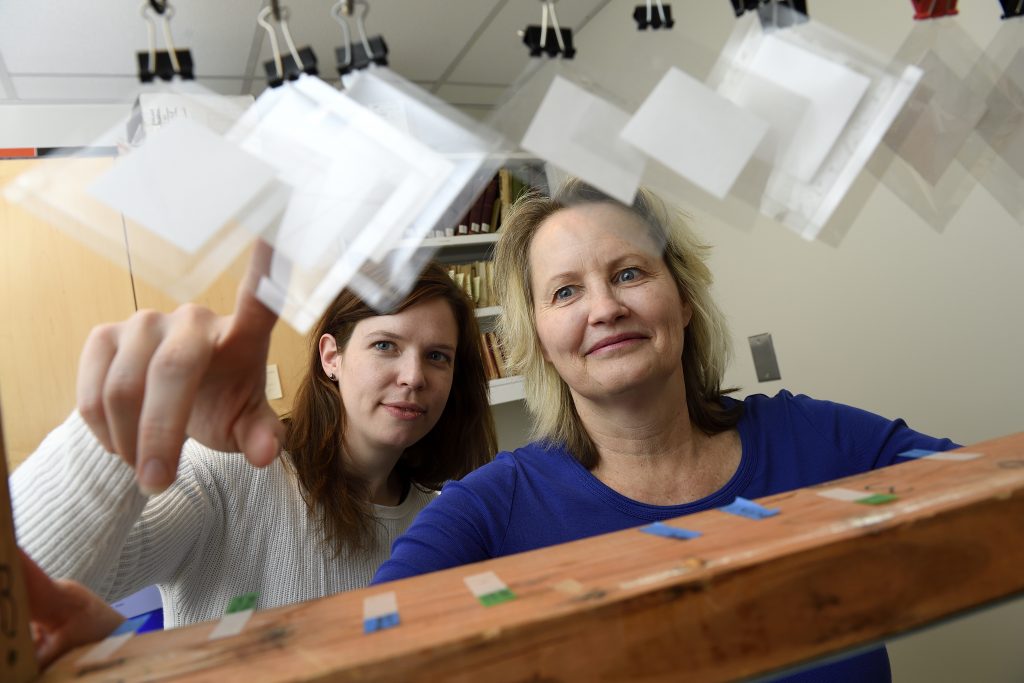
For decades, preservationists have helped protect historic documents, such as centuries-old maps, by placing them in clear envelopes made of a polymer called polyethylene-terephthalate (PET). Enclosing them in these clear envelopes provides mechanical support to help keep these old, brittle treasures from crumbling while also allowing the public to see and sometimes handle them.
But paper degradation isn’t a self-contained event, says Patricia McGuiggan, associate research professor of materials science and engineering. When the long fibers in wood paper age and break down into shorter ones, they release acidic vapors. If these vapors are trapped near the enclosed document, they might hasten the breakdown process.
Whether this actually happens with PET has been unclear, McGuiggan says. It’s been unknown whether PET is permeable to acid vapors—or to other gases that could affect breakdown—allowing them to escape without causing damage.
To answer this question, McGuiggan and her colleagues wetted test “documents” —squares of paper about the size of your palm—with water, a dilute solution of acetic acid (vinegar), or 100 percent acetic acid. After wrapping some of these papers with PET envelopes, they hung them to dry from threads suspended from a balance that measured their mass every 5 minutes. Over the next several months, the researchers tracked and compared masses from the papers wetted with different solutions to those in and out of PET envelopes.
McGuiggan and her team found that PET-enclosed papers wetted with either water or the dilute acetic solution lost a significant and similar mass over time—both, presumably, from the loss of water vapor that permeated through the PET. However, the 100 percent acetic acid solution’s mass stayed relatively the same, suggesting that this acid could be trapped inside PET wrappers, further exacerbating paper breakdown. Her team reported the findings of its study in the January 2017 historic preservation-focused journal Restaurator.
One solution for allowing acid vapors to dissipate is leaving a single side of a PET envelope open, which the researchers found could hasten vapor loss for papers wetted by water and acid fourfold. An even better idea, they suggest, is exploring next-generation polymer materials for something even better than PET.
“Historic preservationists want documents to last for hundreds of years,” McGuiggan says. “We’re hoping that through science, we can do that.”




